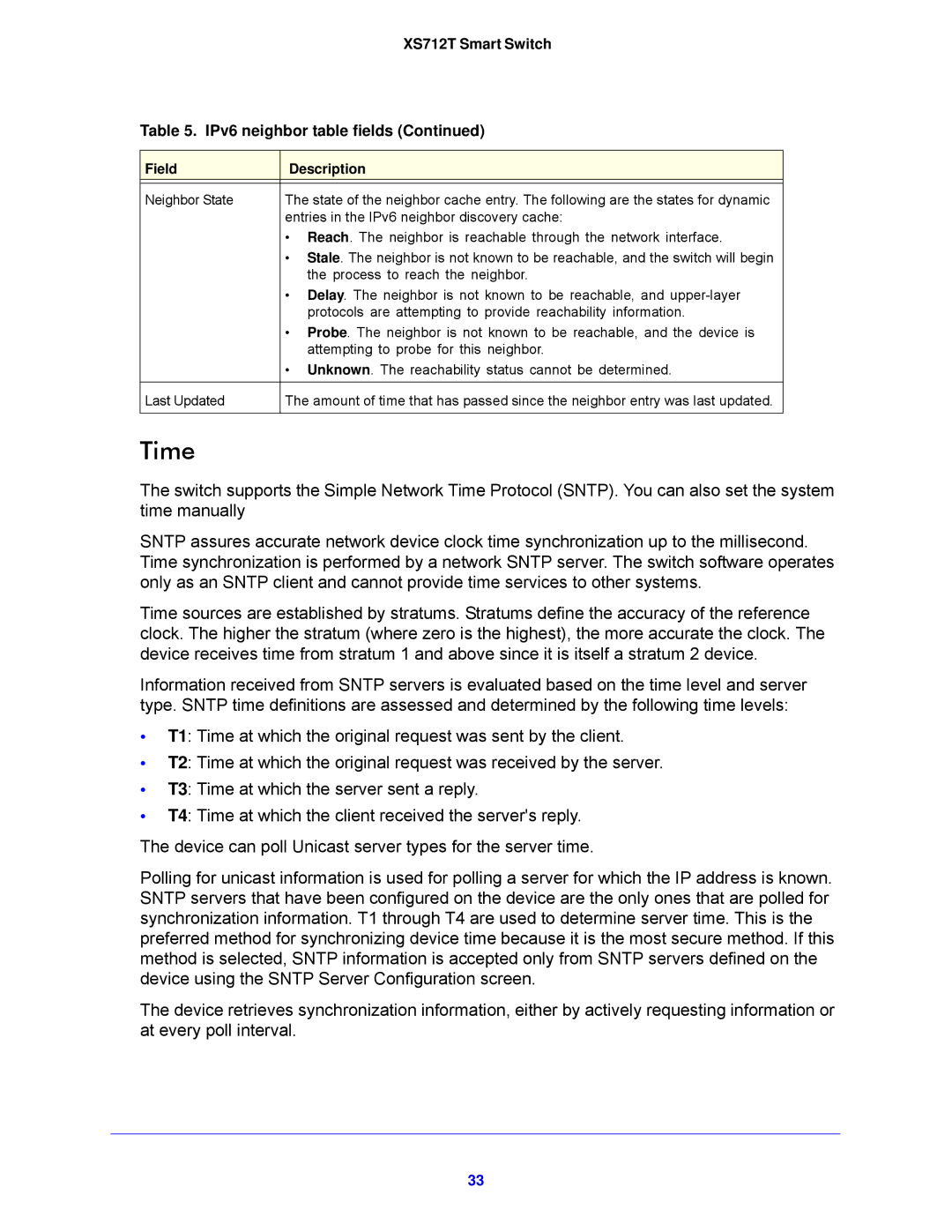XS712T Smart Switch
Table 5. IPv6 neighbor table fields (Continued)
Field | Description |
|
|
Neighbor State | The state of the neighbor cache entry. The following are the states for dynamic |
| entries in the IPv6 neighbor discovery cache: |
| • Reach. The neighbor is reachable through the network interface. |
| • Stale. The neighbor is not known to be reachable, and the switch will begin |
| the process to reach the neighbor. |
| • Delay. The neighbor is not known to be reachable, and |
| protocols are attempting to provide reachability information. |
| • Probe. The neighbor is not known to be reachable, and the device is |
| attempting to probe for this neighbor. |
| • Unknown. The reachability status cannot be determined. |
|
|
Last Updated | The amount of time that has passed since the neighbor entry was last updated. |
|
|
Time
The switch supports the Simple Network Time Protocol (SNTP). You can also set the system time manually
SNTP assures accurate network device clock time synchronization up to the millisecond. Time synchronization is performed by a network SNTP server. The switch software operates only as an SNTP client and cannot provide time services to other systems.
Time sources are established by stratums. Stratums define the accuracy of the reference clock. The higher the stratum (where zero is the highest), the more accurate the clock. The device receives time from stratum 1 and above since it is itself a stratum 2 device.
Information received from SNTP servers is evaluated based on the time level and server type. SNTP time definitions are assessed and determined by the following time levels:
•T1: Time at which the original request was sent by the client.
•T2: Time at which the original request was received by the server.
•T3: Time at which the server sent a reply.
•T4: Time at which the client received the server's reply.
The device can poll Unicast server types for the server time.
Polling for unicast information is used for polling a server for which the IP address is known. SNTP servers that have been configured on the device are the only ones that are polled for synchronization information. T1 through T4 are used to determine server time. This is the preferred method for synchronizing device time because it is the most secure method. If this method is selected, SNTP information is accepted only from SNTP servers defined on the device using the SNTP Server Configuration screen.
The device retrieves synchronization information, either by actively requesting information or at every poll interval.
33
